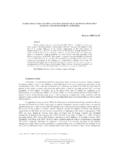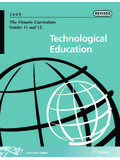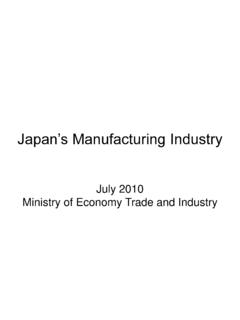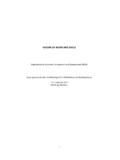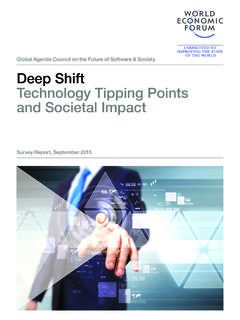Transcription of The role of intellectual property in local production in ...
1 intellectual property and TradeFinancingTechnology TransferR&D, InnovationMonitoring and ReportingThe role of intellectual property in local production in developing countriesOpportunities and challengesImproving AccessThe role of intellectual property in local production in developing countriesOpportunities and challenges WHO Library Cataloguing-in-Publication DataThe role of intellectual property in local production in developing countries: opportunities and property . Transfer. , Essential. Countries. Health OrganizationISBN 978 92 4 151030 1 (NLM classification: QV 704) World Health Organization 2016 All rights reserved. Publications of the World Health Organization are available on the WHO website ( ) or can be purchased from WHO Press, World Health Organization, 20 Avenue Appia, 1211 Geneva 27, Switzerland (tel.)
2 : +41 22 791 3264; fax: +41 22 791 4857; email: for permission to reproduce or translate WHO publications whether for sale or for non-commercial distribution should be addressed to WHO Press through the WHO website ( ).The designations employed and the presentation of the material in this publication do not imply the expression of any opinion whatsoever on the part of the World Health Organization concerning the legal status of any country, territory, city or area or of its authorities, or concerning the delimitation of its frontiers or boundaries. Dotted and dashed lines on maps represent approximate border lines for which there may not yet be full mention of specific companies or of certain manufacturers products does not imply that they are endorsed or recommended by the World Health Organization in preference to others of a similar nature that are not mentioned.
3 Errors and omissions excepted, the names of proprietary products are distinguished by initial capital reasonable precautions have been taken by the World Health Organization to verify the information contained in this publication. However, the published material is being distributed without warranty of any kind, either expressed or implied. The responsibility for the interpretation and use of the material lies with the reader. In no event shall the World Health Organization be liable for damages arising from its in SwitzerlandEditing and design by In s Communication : Arne Hoel/World BankContentsAbbreviations ..iiBackground .. ivExecutive summary ..11. Introduction ..32. Designing a national system conducive to local pharmaceutical industry . Access to patent information .. Making policy choices to favour local production of pharmaceuticals in developing countries.
4 Patentability standards and opposition procedures .. Ensuring appropriate patent examination .. Limiting divisional patent applications.. Post-grant flexibilities: the example of compulsory licences .. 143. Enabling local production through agreements .. 164. Patent landscapes .. Scope .. Products .. Methodology .. Limitations.. Further resources.. 225. Conclusions .. 23 Annex 1 Atazanavir: analysis of patent landscape .. 25 Annex 2 Raltegravir: analysis of patent landscape .. 31 Annex 3 Imatinib: analysis of patent landscape .. 33 Annex 4 Sitagliptin: analysis of patent landscape ..35 Annex 5 Pegylated interferon alfa-2a: analysis of patent landscape .. 38 Annex 6 Gardasil human papillomavirus vaccine: analysis of patent landscape .. 40 References .. 44iiAbbreviationsAIDS acquired immunodeficiency syndromeARIPOA frica Regional intellectual property OrganisationHIVhuman immunodeficiency virusHPVhuman papillomavirusICTSDI nternational Centre for Trade and Sustainable DevelopmentI-MAKI nitiative for Medicines, Access & KnowledgeLDCleast developed countryOAPIO rganisation Africaine de la Propri t IntellectuelleTRIPS AgreementAgreement on Trade-Related Aspects of intellectual property RightsUNCTADU nited Nations Conference on Trade and DevelopmentUNDPU nited Nations Development ProgrammeWHOW orld Health OrganizationWIPOW orld intellectual property OrganizationWTOW orld Trade OrganizationiiiAcknowledgementsWe would like to express our sincere thanks to our colleagues from the United Nations Conference on Trade and Development (Christoph Spennemann)
5 , the World intellectual property Organization (Marco Aleman, Tomoko Miyamoto and Giulia Ragonesi) and the World Trade Organization (Roger Kampf ), who reviewed different drafts of this paper and provided very valuable also warmly thank the Initiative for Medicines, Access & Knowledge and Tahir Amin for developing the patent reports in the annexes, and F. Hoffmann-La Roche and Novartis, which kindly reviewed the patent data on pegylated interferon and imatinib, respectively, and filled in gaps in the the World Health Organization, this work was led by Peter Beyer as part of the project Improving access to medical products in developing countries through building capacity for local production and related technology transfer , under the overall supervision and guidance of Zafar Mirza. Contributions were made by Moredreck Chibi, Sophia Georgeff, Ai Koba and Lena project is supported financially by the European paper forms part of Phase 2 of a project undertaken by the World Health Organization and supported by the European Commission on improving access to medical products in developing countries through building capacity for local production and related technology 1 of the project reviewed the main trends and barriers to local production of pharmaceuticals, vaccines and diagnostics.
6 The evidence gathered in Phase 1 suggests that developing countries that have developed a viable and successful manufacturing industry adopted a long-term vision and followed it up with perseverance. It was identified that a mutually supportive, complementary and coherent combination of policies is required to ensure long-term sustainability. Alignment between medical regulation, industrial and investment policies, science, technology and innovation policies, intellectual property policies, health insurance policies, procurement policies and technology transfer policies appears to be particularly important (1).Phase 2 of the project seeks to continue to develop the policy framework identified in Phase 1 by conducting a deeper analysis of the areas identified in order to develop policy coherence.
7 One of the policy areas where further analysis is required is the role played by intellectual property rights in local production and access to medical products in developing countries in particular, how indirect government support can be provided by the development of policies to support incremental innovation and production and suitable intellectual property rights summaryIntellectual property plays an important role both for the researching pharmaceutical industry, which relies heavily on intellectual property to protect its products, and for generic companies, which produce copies of existing medicines once patent protection expires. Beyond patent protection, trademarks are another form of intellectual property rights used to identify and market pharmaceutical products.
8 Trade secrets and protection of clinical test data are other important elements of this industry. Consequently, how a national intellectual property system is set up is important when considering options for local production of pharmaceuticals in developing practical examples and patent landscapes, this report attempts to set out the various strategies and options available to facilitate local production . The report describes the options available to countries with a generic industry to design an intellectual property system that is favourable for local production and potentially for public health. The report highlights the importance of transparent and fair patent administration systems using the example of access to patent information. The report exemplifies how this can also support the use of certain pre-grant flexibilities to increase the space for local generic companies and facilitate local production .
9 In this context, the questions of whether and how to examine patents are essential. Where countries decide to provide for substantive examination, they need to pay particular attention to what standards need to be followed to ensure implementation of pre-grant flexibilities in practice. Favourable interpretation of various provisions of the Agreement on Trade-Related Aspects of intellectual property Rights (TRIPS Agreement) to support local industry is important: simply writing flexibilities into legislation will not achieve their intended impact without a good understanding by local producers of patent laws and patent systems. Competent intellectual property professionals and a transparent, fair and efficient court system also need to be in place to allow such policies to existence of a patent does not mean local production is not possible.
10 This report provides practical examples showing multiple ways that allowed for local production through cooperation and/or the use of TRIPS flexibilities. Collaboration by patent holders has increased over the past years. Licensing has become common in the area of HIV/AIDS, and we have also seen cooperation in the area of hepatitis C. In this context, implementing pre- and post-grant flexibilities and using them strengthens the negotiating position of local companies when they endeavour to enter into licensing and technology transfer report provides patent information on a number of medicines to show that it is a simplification to describe a medicine as under patent . Patents are granted for national or regional jurisdictions, and the complete landscape often reveals countries where patents have not been filed or granted and thus where local production could take place if the technical problems associated with the production of affordable good-quality medicines can be production depends on many conditions; the intellectual property environment is only one of these conditions and in itself will not be decisive.










